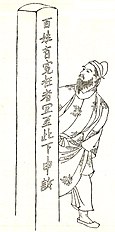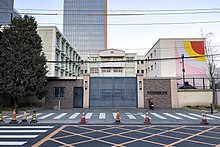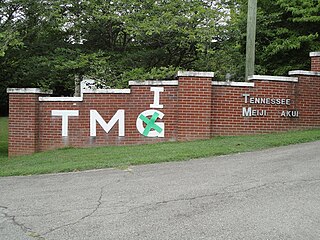
Zaigai kyōiku shisetsu, or in English, Japanese international school or overseas Japanese school, may refer to one of three types of institutions officially classified by the Ministry of Education, Culture, Sports, Science and Technology :
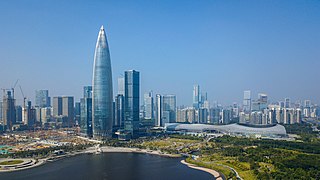
Nanshan District is one of the nine districts comprising Shenzhen. It encompasses the southwest area of the Shenzhen Special Economic Zone, with a population of 1.08 million. In 2022, the district of Nanshan's local GDP output exceeded 800 billion Chinese Yuan or 111 billion U.S. dollars, an economy slightly larger than that of Cuba or Oman. The region has an established tourism industry and is home to several sightseeing locations, as well as multiple seaside parks such as the Shenzhen Bay Park and the Shenzhen Talent Park. Its tallest building is the 393-meter China Resources Headquarters.
The Suzhou New District is one of the specially designated regions for technological and industrial development in China. The district covers an area of 52 km2 (20 sq mi) and is located five kilometres (3.1 mi) west of Suzhou, in the Jiangsu province.

Nanjing International School is a non-profit International school in Xian Lin College and University Town (仙林大学城), Qixia District, Nanjing, enrolling children age 3 to 18 from Pre-Kindergarten to Grade 12. It has around 620 students from over 30 countries.

Japanese in the United Kingdom include British citizens of Japanese ancestry or permanent residents of Japanese birth or citizenship, as well as expatriate business professionals and their dependents on limited-term employment visas, students, trainees and young people participating in the UK government-sponsored Youth Mobility Scheme.

Wuhou District is one of 12 urban districts of the prefecture-level city of Chengdu, the capital of Sichuan Province, Southwest China. It contains the historic site, Wuhou Temple and Jinli Street. The district is bordered by Jinjiang District to the east, Shuangliu County to the south and west, and Qingyang District to the north.
Toronto Japanese School, also known as The Japanese School of Toronto Shokokai Inc., is a school that provides specific Japanese educational curricula, located in the downtown area of Toronto, Ontario, Canada. It was established by the Toronto Shokokai Inc. The school borrows McMurrich Junior Public School building for preschool and elementary school level classes, and the connected Winona Drive Senior Public School building for middle school and high school level classes.
Japanese people in France are French residents and citizens of Japanese ancestry, including both those who have settled in France permanently and those born in the country, along with a significant community of short-term expatriates who spend at most a few years in the country before moving on.

The Shenhe District is one of ten districts of Shenyang, the capital of Liaoning Province in Northeast China. Shenhe serves as the central district of Shenyang and currently hosts the seat of the City Government. It borders the districts of Dadong to the northeast, Dongling to the southeast, Heping to the west, and Huanggu to the northwest.
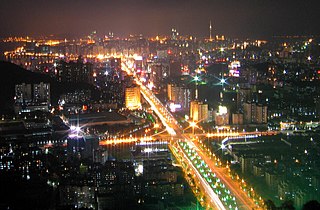
Xiangzhou District is a district of Zhuhai, Guangdong province. It is located at the southwest corner of the Pearl River Delta, bordering Macau to the south and southeast. The district is the political, financial, transit, and cultural center of Zhuhai.
There is a small Japanese community in India which consists mainly of expatriates from Japan or Indian-born people of Japanese ancestry.

The Japanische Schule in Hamburg e.V. is a Japanese international school located in Halstenbek, Schleswig-Holstein, Germany, within the Hamburg Metropolitan Region.

Japanische Internationale Schule Frankfurt e.V. is a Japanese international school in Frankfurt - Hausen, Germany.

Hoshū jugyō kō (補習授業校), or hoshūkō (補習校), are supplementary Japanese schools located in foreign countries for students living abroad with their families. Hoshū jugyō kō educate Japanese-born children who attend local day schools. They generally operate on weekends, after school, and other times not during the hours of operation of the day schools.
Colegio Japonés Auxiliar de Quito is a supplementary Japanese school located in the Pusuquí area of Quito, Ecuador.
Portland Japanese School is a Japanese weekend supplementary school located in the Portland metropolitan area. The school has its office in Park Plaza West in Beaverton, and its classes are held at Hazelbrook Middle School in Tualatin. The Japanese Business Association of Portland, also known as the "Shokookai," oversees the school, which serves levels PK through 12.

There is a community of Japanese people in Germany consisting mainly of expatriates from Japan as well as German citizens of Japanese descent.
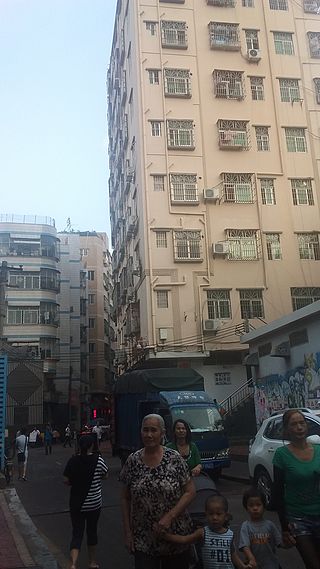
Baishizhou is an area of Nanshan District, Shenzhen, Guangdong, China. As of 2016 about 150,000 people live in Baishizhou. With an area of 0.23 square miles (0.60 km2), it has the most inhabitants, as well as the highest building and population density, of any urban village within Shenzhen. Accounting for unregistered and undocumented residents, some estimates of Baishizhou's rental population are well above two hundred thousand.
QSI International School of Zhuhai is an international school in Wanzi Subdistrict, Xiangzhou District, Zhuhai, Guangdong, China, serving ages 2–17. It was established in 1999 and is a part of Quality Schools International.
